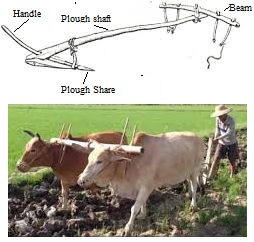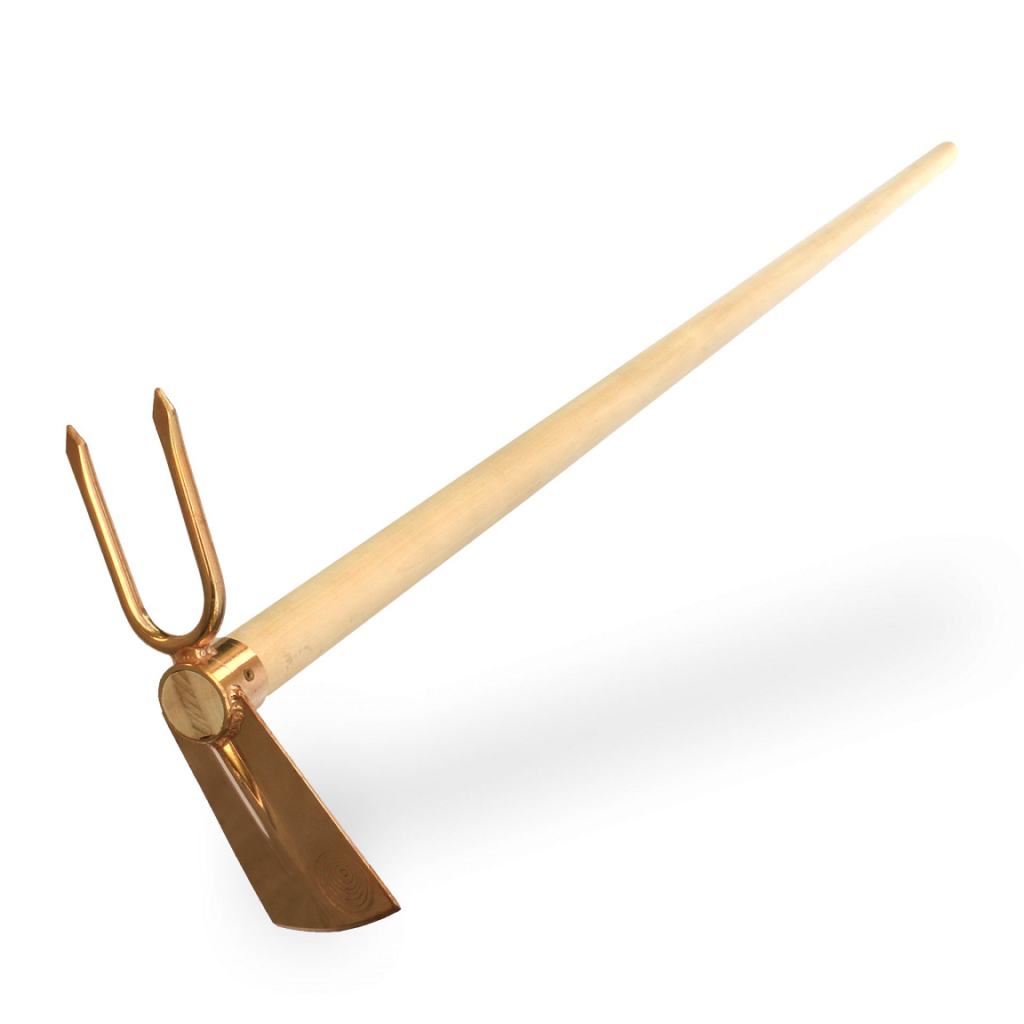Science > Biology > Management of Crop Production > Preparation of Soil
When plants of the same kind are grown and cultivated at one place on a large scale, it is called a crop. For example, a crop of wheat means that all the plants grown in a field are that of wheat. Modern agriculture is carried out in a scientific, and systematic manner. These modern agricultural practices recognize that for a good yield, there should be proper development of the crop. For the proper development of the crop, the crop requires good soil suitable for the crop, proper sunlight, oxygen, water, mineral, nutrients, protection from pests and weeds, protection from diseases, proper storage after harvesting. The needs of crop such as water, sunlight, soil type, nutrients are different for different crops. Except for sunlight and air, the farmer has to manage other inputs externally and effectively. These management processes can be termed as agricultural processes. In this article we’ll discuss preparation of soil.
Agricultural Practices:
Cultivation of crops involves several activities undertaken by farmers over a period of time. These activities or tasks are referred to as agricultural practices. Let us discuss these activities in sequence. The various agricultural practices require certain tools or implements which are called agricultural implements.
Different Steps involved in agricultural practices are
- Preparation of Soil (Ploughing and Levelling)
- Selection of seeds and sowing
- Manuring
- Irrigation
- Weeding
- Crop Protection
- Harvesting
- Threshing and
- Storage
Agricultural Processes in Preparation of Soil:
Soil preparation is important to ensure that the field is ready for planting. A well-prepared field controls weeds, recycles plant nutrients, and provides a soft soil mass for transplanting and a suitable soil surface for direct seeding.
Ploughing or Plowing:
The preparation of the soil is the first step before growing a crop. One of the most important tasks in agriculture is to turn the soil and loosen it. The process of loosening and turning of the soil is called tilling or ploughing. This is done by using a wooden or iron plough. Plough is pulled by animals or tractors. Iron ploughs are more popular these days. If the soil is very dry, it may need watering before ploughing.
Purpose of Ploughing:
- Loosened soil allows the roots to penetrate deep into the soil and allows them to breathe easily.
- Loosened soil helps in the growth of earthworms and microbes in the soil. These organisms are friends of the farmer since they further turn and loosen the soil and add humus to it. Soil contains minerals, water, air, and some living organisms. In addition, dead plants and animals get decomposed by soil organisms. In this way, various nutrients held in the dead organisms are released back into the soil. These nutrients are again absorbed by plants.
- Only a few centimetres of the top layer of soil supports plant growth, turning and loosening of soil brings the nutrient-rich soil to the top so that plants can use these nutrients.
- Loosened soil mixes more uniformly with fertilizers.
- It also uproots and buries weeds standing in the field.
Levelling:
The ploughed field may have big pieces (lumps) of soil called crumbs. It is necessary to break these crumbs with a plank. The field is levelled for sowing as well as for irrigation purposes. The levelling of soil is done with the help of a wooden or iron leveller.
Purpose for Levelling:
- To prevent the top fertile soil from being carried away by strong winds or washed away by rainwater.
- To help in the uniform distribution of water in the fields during irrigation.
- To help in preventing the loss of moisture from the soil.
- To improve weed control.
Manuring:
Sometimes, manure is added to the soil before tilling. This helps in the proper mixing of manure with soil. The soil is watered before sowing.
Agricultural Implements in Preparation of Soil:
- Wooden or iron plough or hoe.
- Wooden or iron leveler.
- If a tractor is used then, iron cultivator.
Plough:
Ploughs are made of wood or iron. It is pulled by a pair of bulls or other animals and operated by the farmer through the handle. It has 3 important parts:
- Ploughshare: strong triangular iron strip attached to one end of plough shaft.
- Plough shaft: long log of wood
- Beam: stand placed on animals’ neck attached to plough shaft at the other end than to which plough share is attached.

Hoe:
A hoe is a tool used for loosening soil and removing weeds. It is made of wood or iron. A strong iron plate attached to the long wooden rod acts like a blade and helps to loosen the soil. It is pulled by animals.

Cultivator:
A Cultivator is a tool used for ploughing. Manual, as well as tractor driven cultivators, are used. Tractor driven cultivators are fast, thus saves time and also saves human labour.

Leveller:
The levelling of soil is done with the help of a wooden or iron leveller. Manual, as well as tractor driven levelers, are used. They are used to break big pieces (lumps) of soil and levelling the field for sowing and irrigation.

Tractor:
A tractor is a utility vehicle is a vehicle, that is designed to carry out a specific task with more efficacy than a passenger vehicle. Tractors are typically designed with powerful engines to run over rough terrain and pull extremely heavy loads. This design makes them effective in tough farming or landscape tasks. Tractors are available in a wide range of options to suit specific tasks and requirements. Tractors are utilized in various agricultural tasks like ploughing, tilling, levelling, disking, harrowing, planting fields and similar agricultural activities. It can be used for towing trolleys and other agricultural equipment.

Uses of a Tractor in Agriculture:
- It is used for ploughing the land using cultivator, ripper, and rotavator.
- It is used to prepare a bed for the crop and apply compost/fertilizers along the bed.
- It is used for planting seeds/plants at required spacing intervals using vegetable transplanter/seeder.
- It is used for transport the harvested produce using trailers easily and more effectively.
- It is used for laying polythene and drip line layer in the soil. In the absence of the drip irrigation system, water browsers are attached to the back of tractors to help with irrigation.
Previous Topic: Crops and Their Classification